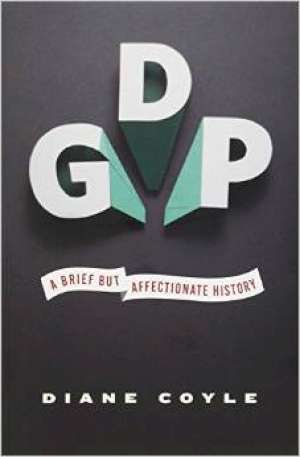12 October 2014
GDP: A brief but affectionate history
Diane Coyle
2014, Princeton University Press, 168 pages, £13.95
ISBN 9780691156798
Reviewer: Bill Allen

Statisticians are the unsung heroes of macro-economics. The invention of national income accounting was perhaps the greatest step forward in the subject in the 20th century. GDP releases are now awaited with a mixture of hope and trepidation, and are regarded, rightly, as the most important among macro-economic indicators. Their producers are periodically abused by economists whose expectations and theories their statistics fail to corroborate, whether for good reasons or bad.
Information about what the figures mean and how they are compiled is available in as much detail as anyone could possibly want in technical manuals (the text National accounts statistics: sources and methods by Rita Maurice resonates with those of a certain age). Diane Coyle has done a great service by putting what appears to be a dry and technical function into its essential historical context, by explaining how it was that national income accounts came to be compiled and adapted, and what the statistics mean, and how they have changed as the economy has developed.
National accounts as we know them were first developed in the 1920s and 1930s, by Colin Clark (who was Australian) in the U.K. and Simon Kuznets in the U.S.A. There were early debates about whether the accounts should attempt to measure total production, or the total amount which might be thought to contribute to human welfare, which would involve the deduction of items such as military expenditure. National accounts came into their own when they were used for economic planning in the Second World War. By that time, of course, there was no question of deducting military expenditure. After the war ended, governments made it an objective to maintain full employment. Macro-economic policy was never the same again, and national accounts statistics were an essential accompaniment to the new economics.
It has always been clear that GDP is not an indicator of welfare. For example, natural disasters add to GDP, because the damage that they do is not deducted, but the post-disaster repair work is included. Much of the financial activity that augmented GDP growth in the noughties turned out to have been subtracting value, rather than adding to it. And, fortunately, not all of the good things in life are even measurable, let alone included in GDP.
More fundamentally, as Coyle rightly points out, the compilers of national accounts have faced an unending stream of problems of definition and interpretation, particularly when they compute statistics of real GDP, which purports to exclude the effects of inflation, and is normally regarded as more important than nominal GDP. She identifies the sources of the main problems as the complexity of the modern economy, and the effects of globalisation, the increasing importance of services and intangible products, whose quantity is hard to measure, and the issues surrounding sustainability and the depletion of finite resources.
According to the official statistics, real GDP per capita in the UK was 3¼ times larger in 2012 than it was sixty years earlier in 1952. What exactly does this mean? Does it mean that the average person eats 3¼ times as much food, smokes 3¼ times as many cigarettes, uses 3¼ times as much coal, and occupies 3¼ times as much living space, as they did sixty years ago? Of course not. The main influence on the GDP statistics, as on the economy, has been the development of new technologies and new products. Valuation of these new products in statistics of real GDP, and in price indexes, is to an unavoidably large extent a matter of arbitrary convention, as Coyle acknowledges. For that reason, I personally doubt whether estimated percentage increases in real GDP per capita over long periods have any useful meaning. The same of course applies to price indexes, which incidentally means that long-term index-linked bonds of the kind that the Treasury routinely issues are pretty much a lottery, both for borrowers and investors.
This is not, however, to deny that short-period changes in real GDP, over periods during which the structure of the economy doesn’t change much, are by far the best available guide to the scale of economic activity. Dr Coyle is surely right when she says that GDP is not outmoded, despite all the problems. The people who use GDP need to understand what it is and what it isn’t, and to know what are its strengths and weaknesses. They should read this invaluable and accessible guide.
